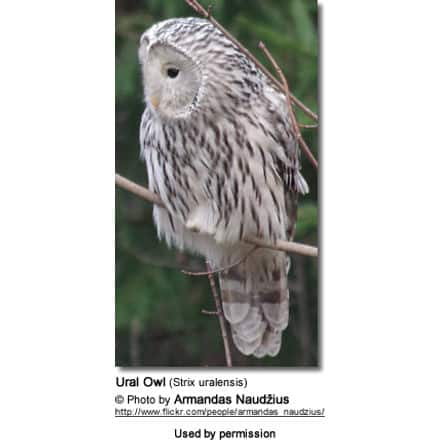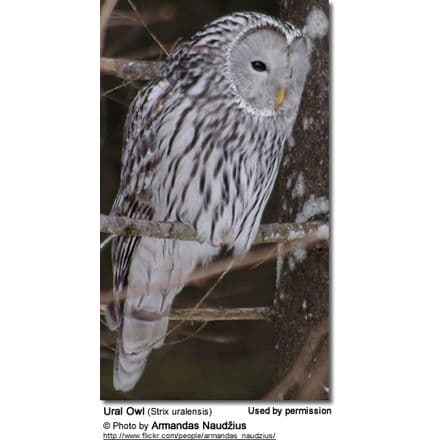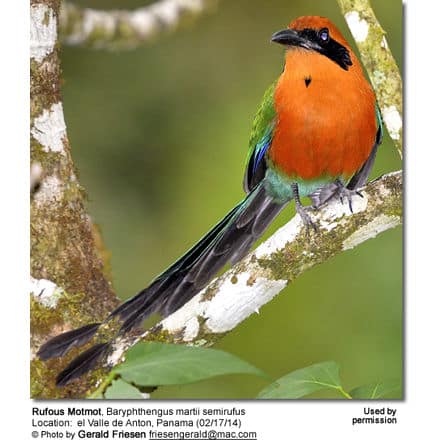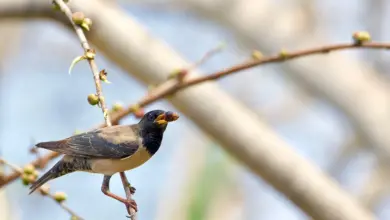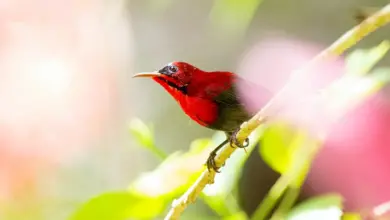Ural Owl (Strix uralensis)
The Ural Owls (Strix uralensis) – also known as Ural Wood Owls – are medium-large, nocturnal owl found in Europe and northern Asia. They were named for the Ural Mountains, which is part of their natural range.
Distribution / Habitat
Ural Owls occur in Europe and Asia, from Sakhalin, Japan, and Korea in the east to Scandinavia in the west. The southern border follows the southern delimitation of the taiga (boreal forest).
They are associated with loose, mature, mixed forests and favor moist rather than dry areas.
Even though they are still common throughout much of their range, their numbers have been declining in areas where hollow and broken trees were removed from the forest, reducing their nesting habitat.
Subspecies and Ranges:
- Strix uralensis uralensis (Pallas, 1771)
- Range: Western Siberia (from eastern European Russia east to the Okhotsk coast)
- Strix uralensis liturata (Lindroth, 1788)
- Range: Northern Europe and northwestern Russia / Scandinavia (east to about Arkhangel’s region), south to northern Poland, Belarus, and the middle Volga River region.
- Strix uralensis macroura (Wolf, 1810)
- Mountains of central and southeastern Europe (from the Carpathian Mountains south to Bulgaria, and in the western Balkans)
- Strix uralensis yenisseensis (Buturlin, 1915)
- Range: Central Siberian plateau.
- Strix uralensis nikolskii (Buturlin, 1907)
- Range: Transbaikalia east to Sakhalin, south to northeastern China and Korea.
- Strix uralensis japonica (Clark, 1907)
- Range: Japanese island of Hokkaido.
- Strix uralensis hondoensis (Clark, 1907)
- Range: Northern and central areas of the Japanese island of Honshu.
- Strix uralensis fuscescens (Temminck and Schlegel, 1847)
- Range: Southern Honshu south to Kyushu.
- Japanese islands of Honshu (southern parts) and Kyushu.
Description
Ural Owls are amongst the larger members of the wood owl family with a body length of 19.7 – 23.2 inches (50 – 59 cm). A male’s wingspan is about 45.3 inches (115 cm) and a female’s about 49.2 inches (125 cm). Males generally weigh between 19 – 26 oz (540 – 730 g), and females between 25.4 – 42 oz (720 – 1,200 g).
Males and females look identical, except the females tend to be larger in size.
Ural Owls have large, round heads with plain buffish-grey facial disks. The bill is orange-yellow. The plumage is mostly buffish grey-brown, with dark brown streaking on the back, back of the head and underparts. The wings are rounded and the long tail is wedge-shaped, with dark barring on the upper tail.
Their eyes are black.
Similar Species:
- Ural Owls are smaller than Great Grey Owls and much larger than the Tawny Owls. Other than size, identification can typically be made by the color of their plumage.
Breeding / Nesting
Populations found in the northern parts of their range breed in lowland forests, however avoiding dense areas, particularly those of pure conifers. Central European populations favor deciduous woodland. Nesting birds aggressively protect the area around the nest site and will even attack humans.
These cavity nesters may take over abandoned raptor nests, but may also accept nestboxes.
The average clutch consists of 2 – 4 eggs, which are incubated for about 27 – 34 days to hatching. The young leave the nest when they are about 4 weeks old and are capable of flight a couple of weeks later.
Diet / Feeding
Ural Owls feed on small mammals, such as mice, and voles up to the size of hares; and medium-sized to large birds, such as Jays, Willow Grouse, and Woodpigeons.
Calls / Vocalizations
Their loud territorial calls can be heard for up to 1.2 miles or 2 kilometers and are described as a soft, deep ‘wo-ho….. woho uhwo-ho‘. They also deliver unmistakable yapping ‘ wau – wau ‘ sounds…
Alternate (Global) Names
Belarusian: ???????????? ????????? … Bulgarian: ??????? ??????? … Catalan: Gamarús dels Urals … Chinese: ???, ???, ?????, ???? … Croatian: Jastreba?a, Sovina jastreba?a … Czech: Puštík belavý, Puštík b?lavý, puštík bìlavý … Chuvash: ????? ??????? ?????? … Danish: Slagugle … Dutch: Oeraluil .Estonian: Händkakk, Uraali kakk … Finnish: Viirupöllö … French: Chouette de l’Oural … Galician: Curuxa uralense … German: Habichtskauz … Hungarian: Uráli bagoly … Icelandic: Valugla … Italian: Allocco degli Urali … Japanese: Fukuro, fukurou … Kazakh: ????????? ??????? … Korean: ??????? … Lithuanian: Uraline peleda, Uralin? pel?da … Latvian: Garastes p?ce, Ur?lp?ce … Macedonian: ???????????? ???, ??????? ???? … Mongolian: ??? ????????? … Norwegian: Slagugle … Polish: Puszczyk, puszczyk uralski, Sowa uralska … Portuguese: coruja uralense, Coruja-uralense … Russian: Dlinnokhvostaya Neyasyt, ????????????? ???????, ??????? ?????????????, ??????? ????????????? ????????? … Slovak: Sova dlhochvostá, sova uralská … Slovenian: Kozaca, koza?a, vrbji kovacek kozaca … Serbian: dugorepa sova, Uralska sova, ??????? ????, ??????? ???? … Spanish: Cárabo Uralense … Swedish: Slaguggla … Turkish: Ural Bayku?u … Tuvinian: ???? ?????????? ?????? … Ukrainian: ??????????? ????, ???? ???????i???, ???? ???????????
More Owl Information
- Owl Information
- Index of Owl Species with Pictures
- Owl Eyes / Vision Adaptations
- Pygmy Owls
- Barn Owls
- Horned Owls
- Scops Owls


